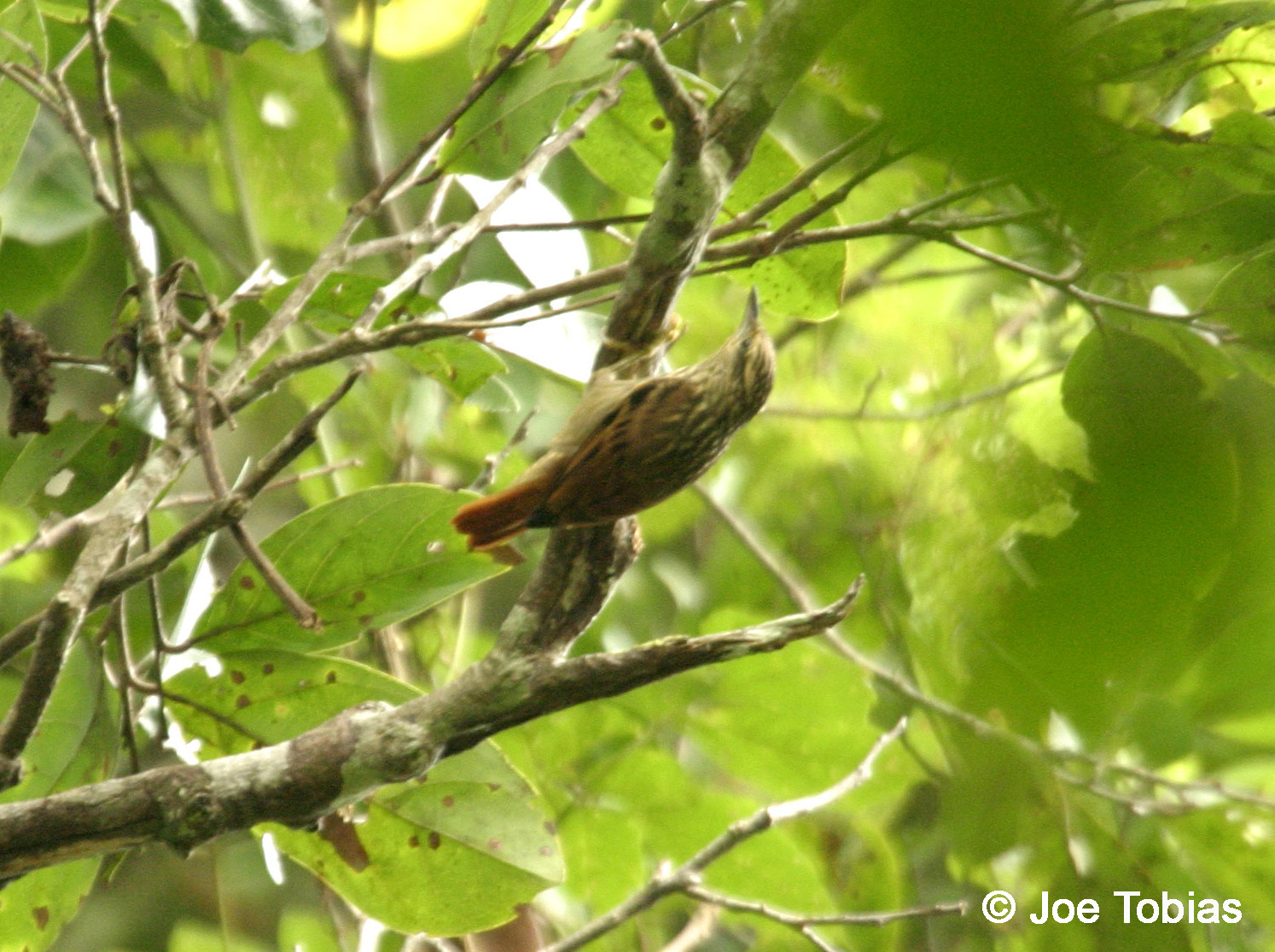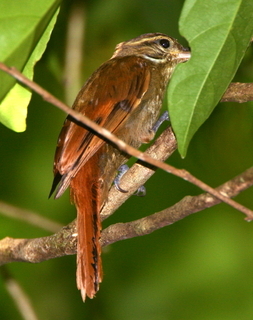
Xenops milleri
SUBFAMILY
Philydorinae
TAXONOMY
Xenops milleri Chapman, 1914.
OTHER COMMON NAMES
French: Sittine а queue rousse; German: Rotschwanz-Baumspдher;
Spanish: Picolezna de Cola Rufa.
PHYSICAL CHARACTERISTICS
Body length is about 4 in (11 cm). Bill is short, straight, and
pointed. The body is slender, and the tail is moderately long.
The sexes are similar. The back, top of head, and underparts
are brown heavily streaked with buffy-white, the wing and tail
are rufous, the wing shows a conspicuous rufous wing-band in
flight, and there is a white stripe over the eye.
DISTRIBUTION
Occurs in northern South America, in southern Venezuela,
French Guiana, Surinam, southeastern Colombia, eastern
Ecuador, eastern Peru, Amazonian Brazil, and likely northern
Bolivia.
HABITAT
Inhabits humid, lowland tropical forest, occurring in both the
tree canopy and at forest-edges. Occurs as high as about 2,000
ft (600 m).
BEHAVIOR
A non-migratory species. Occurs singly or as a breeding pair.
Often occurs with other birds in mixed-species foraging flocks.
The song is not known, but is likely a series of shrill notes,
similar to other xenops.
FEEDING ECOLOGY AND DIET
Forages on tree branches and in dense vine-tangles for insects
and other invertebrates.
REPRODUCTIVE BIOLOGY
Constructs a nest within a cavity dug into rotten wood of a
branch or tree trunk, or uses a natural cavity or one excavated
and abandoned by another species of bird. Both the male and
female incubate the eggs and rear the nestlings.
CONSERVATION STATUS
Not threatened. A locally abundant species.
SIGNIFICANCE TO HUMANS
None known.
Other popular Animals
Photo Gallery of - Rufous-tailed xenops




 Animalia Life
Animalia Life